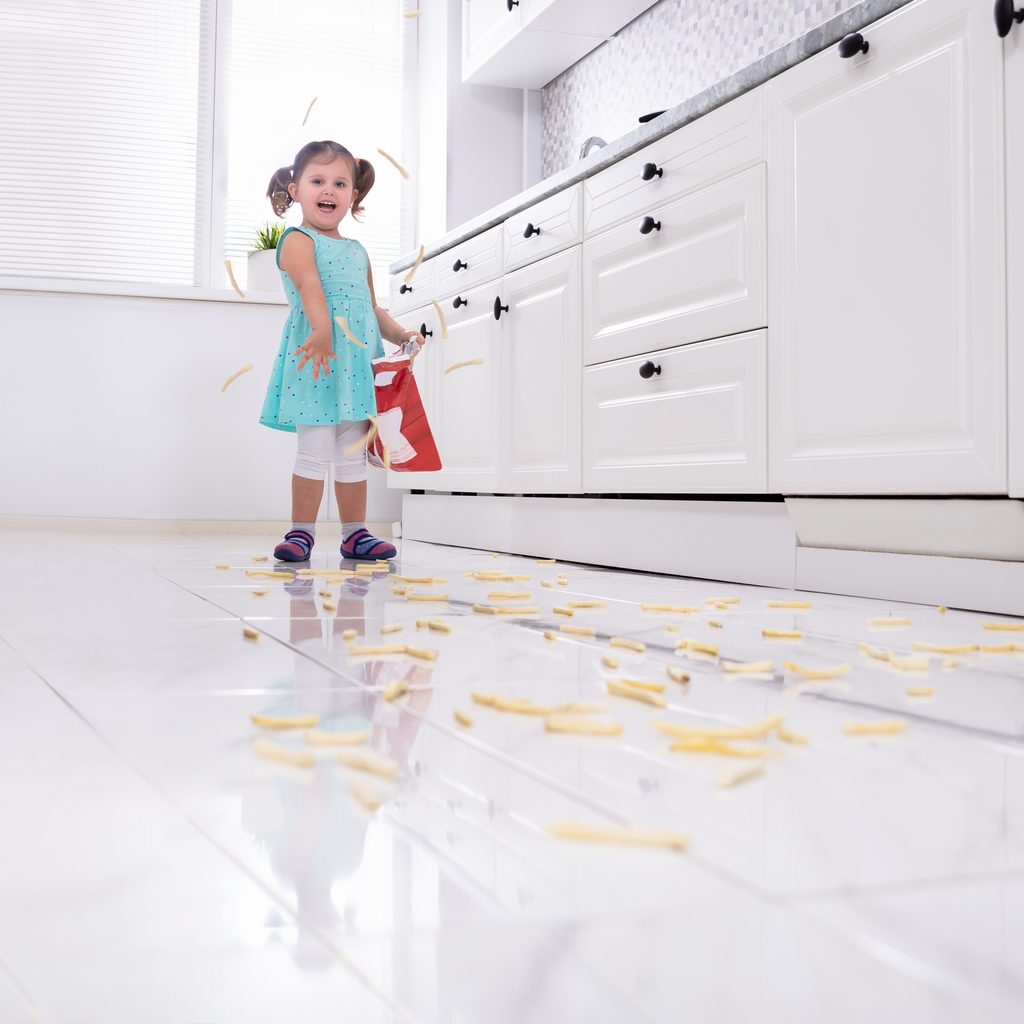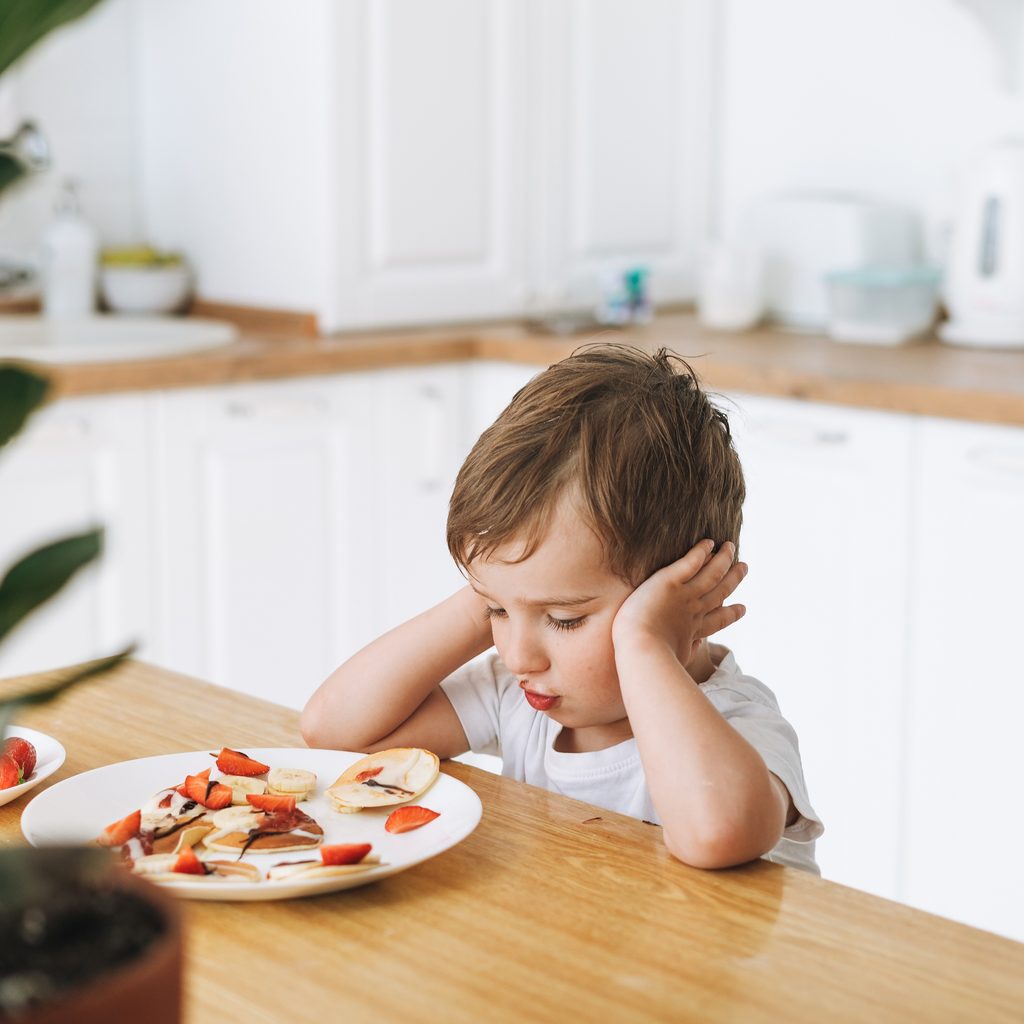Raising a toddler can be so much fun, but it can also be a little frustrating as you watch your child express newfound emotions and independence in a variety of different ways. One of those ways is when your little angel decides to throw food at you, the floor, the walls, or anything else in the line of sight.
We know that children grow and develop so much during the toddler years that they often act out as a means of expressing their emotions, especially when they don’t yet have the verbal skills to voice their frustrations. Often they will throw their food as a way of communicating that they’re frustrated, tired, bored, or they simply don’t love what they’re eating. Regardless of why they’re throwing their food, toddlers need to learn that chucking dinner across the kitchen isn’t the proper way to get anyone’s attention. If you’ve been dealing with a stubborn toddler who has decided to practice their pitch by using their food, read on to find out ways you can get them to stop.

Why do toddlers throw their food?
As mentioned above, there are several reasons your toddler may have decided that they would rather throw their dinner than eat it, and it often has nothing to do with the menu selection. Parent educator Ann McKitrick explained to Romper that a big reason that toddlers throw food is simply to get a reaction: “From a high chair, there are lots of opportunities for interesting cause and effect. One of the most compelling is the response from the grownups in the room. They learn, based on the adult response, that this is OK or not OK. If they’re being ignored, throwing food is a sure-fire way to get attention. And toddlers love attention.”
Oftentimes toddlers will throw their food simply because they’re bored and it’s sitting in front of them, or they want to test their boundaries as to what sort of behavior is acceptable. They may not like what they’ve been served; as a way to express their distaste they may throw the food, or if they’re finished eating they may no longer want to look at the remaining food that’s sitting in front of them. While throwing food may not be the cleanest or most acceptable toddler behavior, it is quite normal.
What to do?
Setting boundaries immediately is an important step in getting your toddler to not only stop throwing their food but to realize that throwing food is not acceptable behavior. The Children’s Nutritionist suggests that parents try to remain positive when correcting their food-throwing toddler. Instead of going with your gut reaction and telling your child to stop throwing food, they suggest instead telling your toddler that “food stays on the table.” If your child continues to throw food, they suggest ignoring the behavior.
Perinatal and pediatric nutritionist Aubrey Phelps told Romper that one way to get toddlers to stop throwing food is to simply end mealtime when the unacceptable behavior begins. “Typically, I recommend clients say something like, ‘Hmmm, food is for eating, not throwing; looks like you must be all done!’ If babe protests, you can respond cheerfully and calmly with an ‘OK! If you throw again, then you will be done eating!’ If the child throws again, end the meal, reminding them that food is for eating, not throwing. And don’t offer again until the next scheduled meal or snack.”
Serving size can also be a factor when it comes to food throwing. Yummy Toddler Food suggests serving a small amount of food at a time, therefore your toddler isn’t left with excess food for them to throw. They also recommend offering your toddler a choice in what they would like to eat and accepting that there may be some foods they don’t like.

Adjust your expectations
Experts also warn that parents may need to adjust their expectations when it comes to mealtimes and their toddlers. Toddlers don’t have the patience to sit for long periods for a meal, and boredom and frustration can often lead to throwing food. Kids Eat in Color suggests that toddlers can be expected to sit for a meal for just a few minutes per year of age, which may come as a surprise to many parents. They suggest that letting your toddler down from the table as soon as they’re done eating may help curb unacceptable behavior. It just isn’t always realistic to expect many toddlers to be content to sit at a table for an extended period.
Toddlers often act out as a way to get attention so make sure your toddler is getting a bit of quality time before a meal is served. The toddler years are all about testing boundaries and learning to communicate their feelings in a variety of ways, which is why setting realistic expectations while giving positive reinforcement can help mealtime run smoothly.



